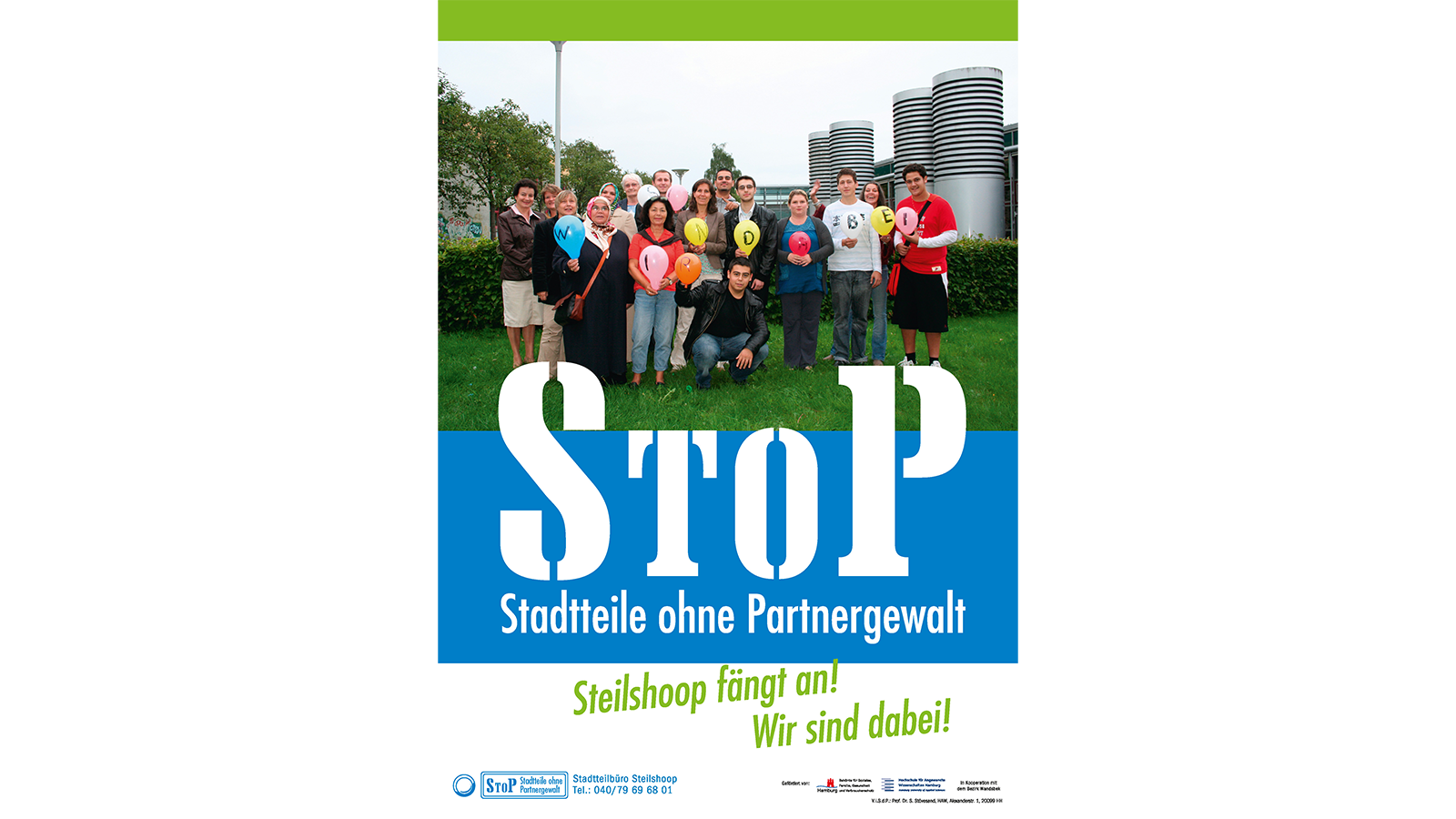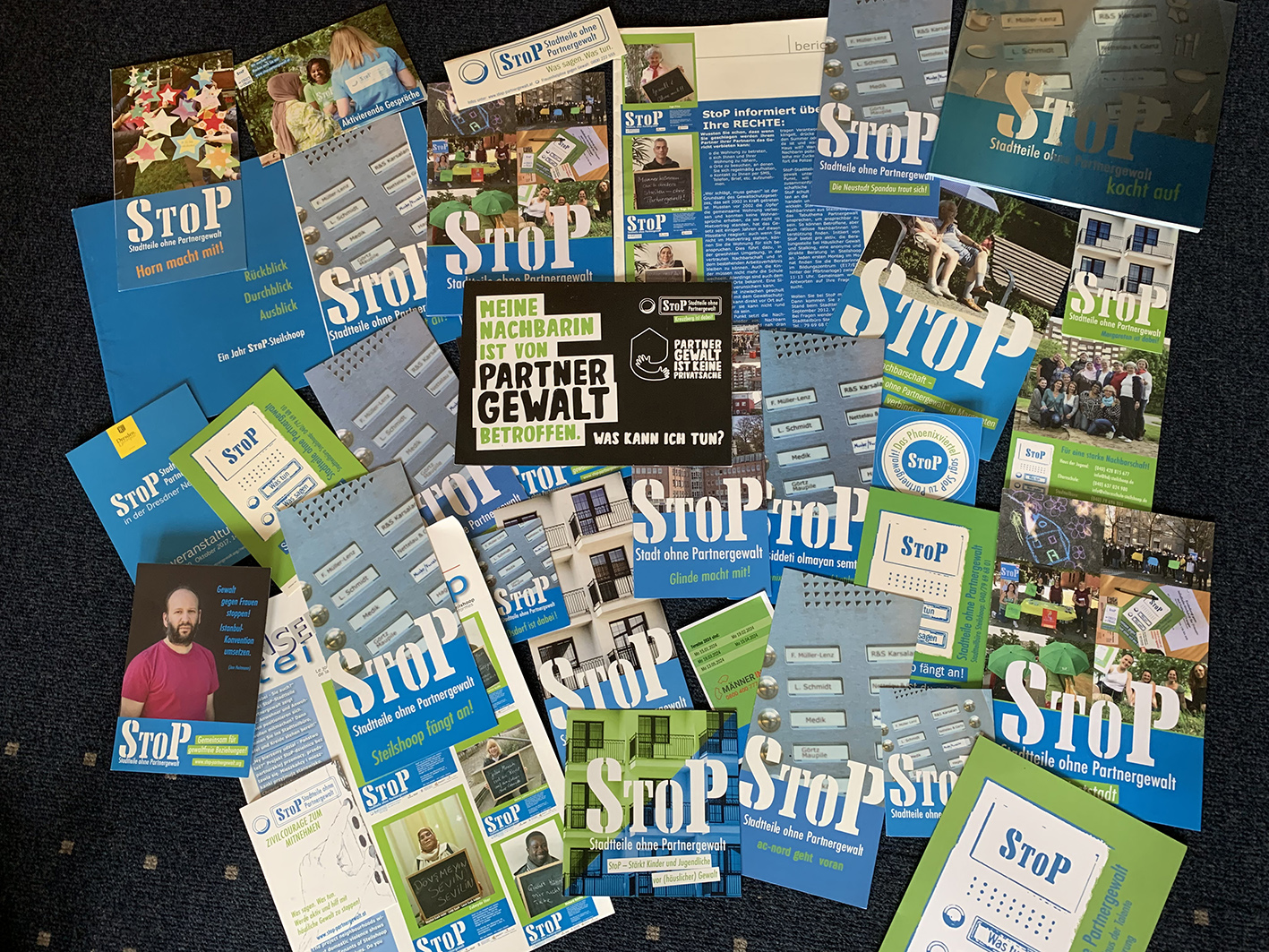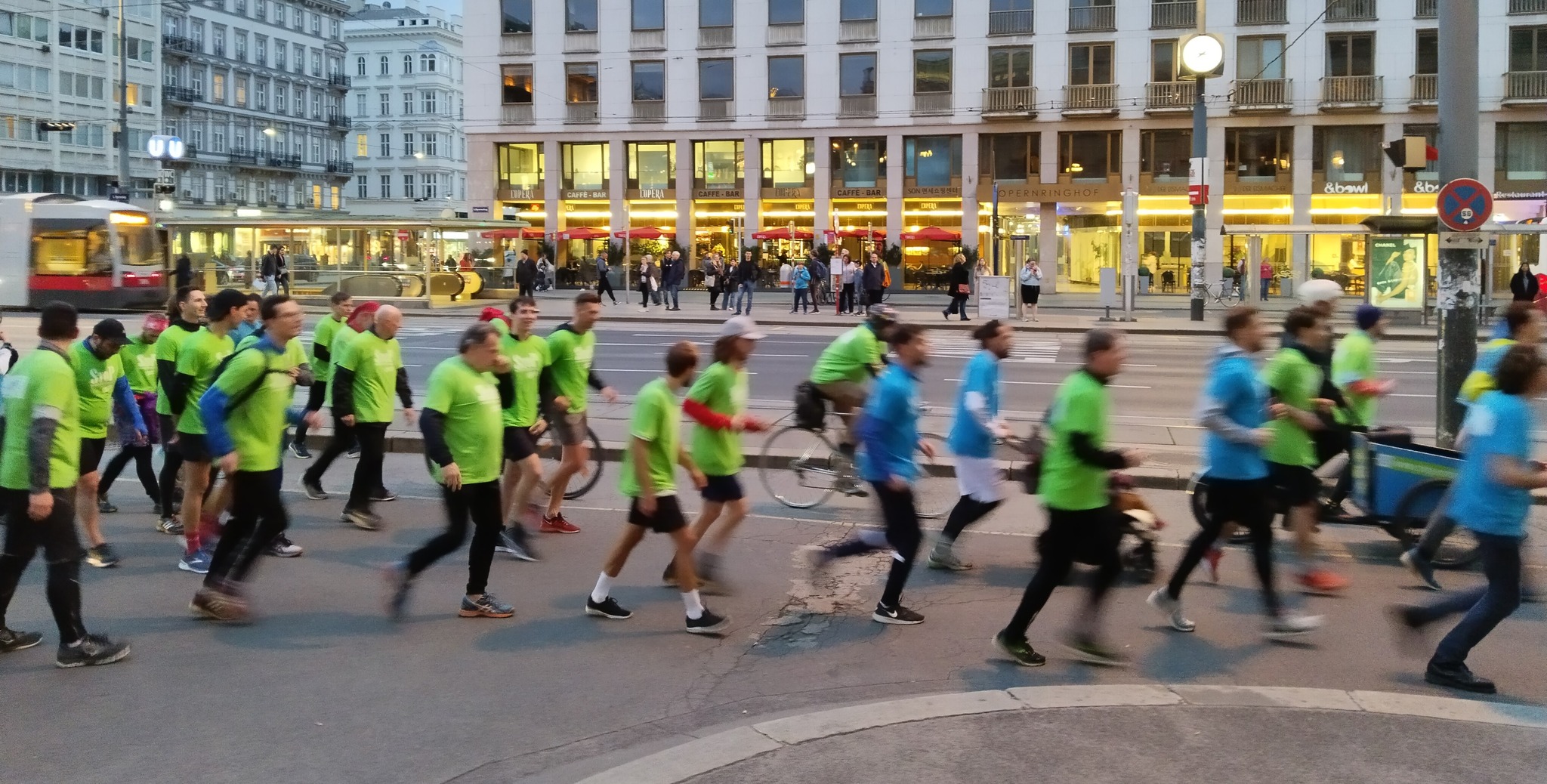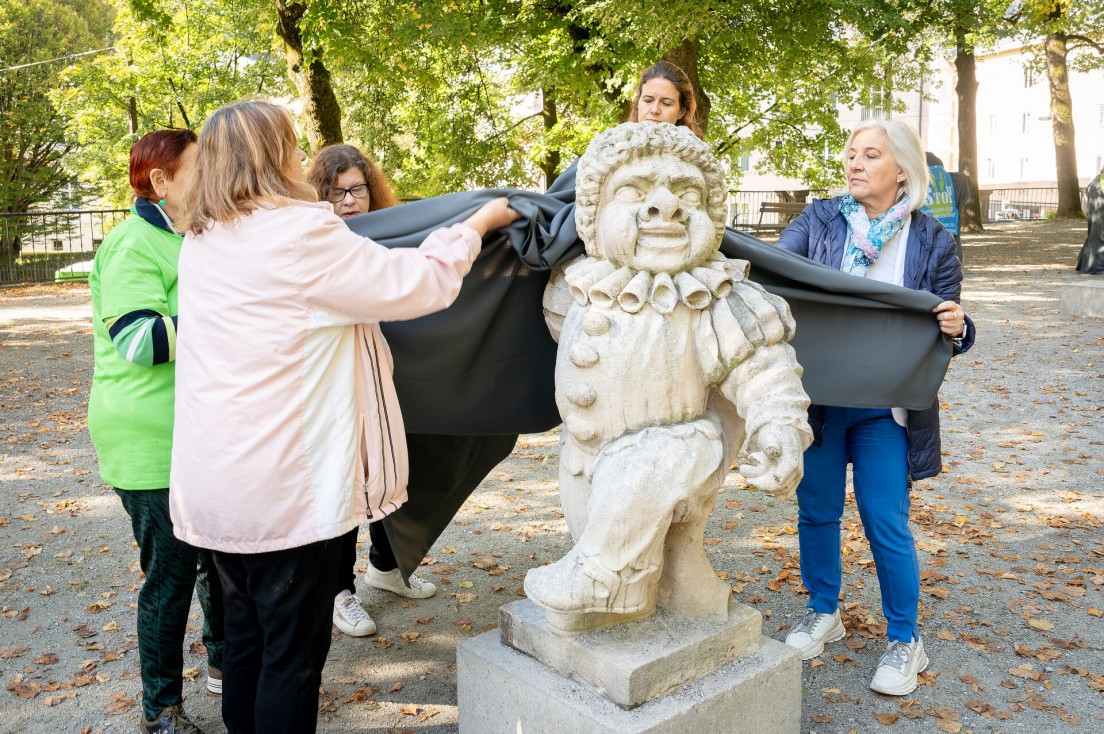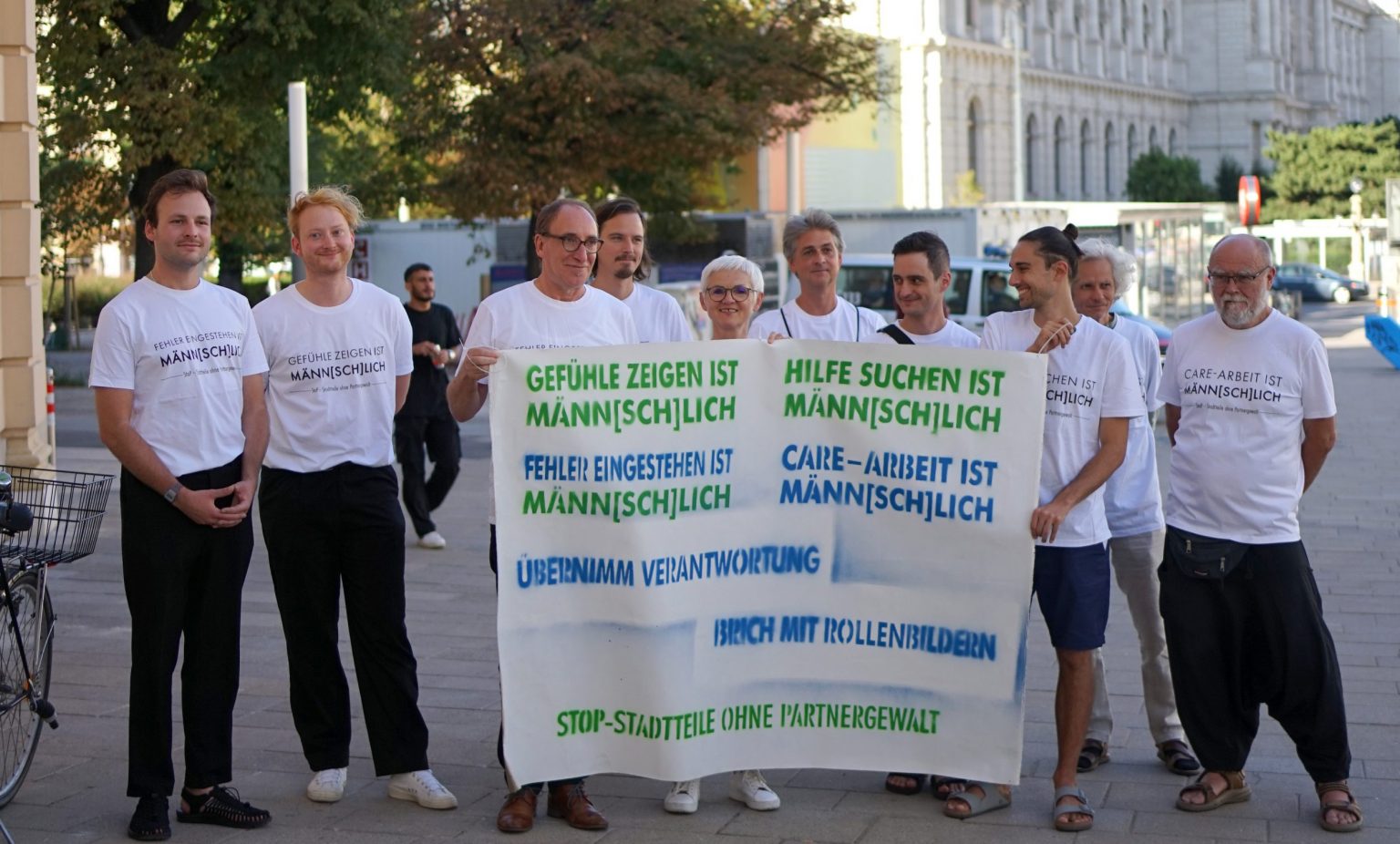Why
Civil courage training is crucial in combating domestic violence because it empowers individuals to intervene when they witness abuse, offering support to victims and potentially preventing further harm. It reduces bystander apathy, provides practical tools for safe intervention, and promotes a culture of responsibility and empathy within communities, ultimately helping to protect victims and challenge abusive behaviors.
What
There are many ways to intervene in civil courage against domestic violence, and they are incredibly diverse; each person can participate, get involved, use and express their own creativity (see more methods below), but here we focus mainly on the so-called “paradoxical intervention” in domestic violence.
This means that neighbors, for example, don't turn the TV down, but listen when it gets loud and shouting or loud rumbling is heard from the apartment next door. They ring the doorbell of the apartment, ask if they can borrow a charger for their mobile phone, thereby interrupting the violence. When violence does not stop, or when there is a highly dangerous situation, it is important to call the police.
That also means you shouldn't knock and ask, “How are you doing”, or “What are you doing” or “Is everything okay with you?”. That would be counterproductive and it could even be dangerous for the victim.
Other methods of intervention
- Creation of a telephone chain to support a woman affected by violence
- Offer shelter in your own home
- Meet with other neighbors and talk and inform about domestic violence together in the shopping center
- Ask the kindergarten to invite you to talk about the topic at the parents' evening
- One helps to make his neighbor's front door “safe from entry”
- Caretakers not only distribute StoP information leaflets and tolerate StoP stickers on front doors and mailboxes, but also hang posters on the information board of the housing association
- The school integrates the topic of domestic violence into the lessons
- Students, teachers and neighbors paint a park bench together with the slogan “There is no place for violence against women and girls” and place it together in front of the school or in front of the town hall
- The community centre and the parents' school offer self-assertion and de-escalation training
- Men sit down with men, talk about violence, about what can be done about it
- The music group from the youth centre makes a rap in which the term "Protection against Violence " booms loosely from the speakers
- Women get together and organize the escape of a neighbor to the women's shelter.
- A woman from the StoP group does Tupperware parties and every time before she starts Tupperware, she talks about the topic, distributes flyers and promotes StoP as a volunteer
- In the window of a shop hang a poster with the numbers of women's shelters and counselling centres. And at the hairdresser and in the pub and in the doctor's office
- Declaration of all tradespeople and numerous associations from the district that domestic violence is not a private matter and will not be tolerated.
- Sexist advertising has no chance in the district, it is pasted over, painted over
Objectives
- Concrete Interruption of partner violence in the neighbourhood
- Showing that acts of violence have been registered
- Empowering neighbors to get involved
- Implement intervention methods against partner violence
- Exercising civil courage against partner violence with self-understanding
- To strengthen the courage to have civil courage in the neighbourhood
- To improve and ensure safety for affected women and children
- Making the home safer for those affected
Facilitators Guide
Here we would like to present the central method of civil courage against domestic violence: The "paradoxical intervention". It can interrupt a violent situation and possibly prevent worse things like femicide. The so-called "paradoxical intervention" can be applied both in the neighbourhood and in the public sector.
For a paradoxical intervention, extensive knowledge of civil courage is necessary.
The more often the neighbours and multipliers practice and learn methods of civil courage and interventions, the more experienced they become. To this end, training and further education should be carried out again and again. Among other things, you have to know that simply knocking on the door and asking “What's going on? Is everything okay anyway” is counterproductive and can even be dangerous.
A paradoxical intervention thrives on an element of surprise – something different happens than expected, something that may not fit the situation. In acute situations of violence and if you witness acute and dangerous domestic violence, you should not hesitate to call the police, because it may be that the affected wife and children are in a high-risk situation and you as a neighbor may not be able to assess from the outside. Nevertheless, you should also knock, because experience shows that the police do not come quickly enough, or you are unsure about the situation and want to get an impression about what is going on, thus you should first use the paradoxical intervention.
How does it work? Interrupt the act of violence by ringing the doorbell, knocking and asking with a banal sentence for something, such as food or other objects:
“Do you have milk or sugar?”
“I've run out of flour, do you have any you can give me?”
“Have you seen my cat?”
“Did the mail carrier leave a parcel for me?”
When opening the door and looking at the person opening it, you may be able to get aimpression of the situation. This indirectly signals to the perpetrator that theneighborhood is listening and does not accept this behavior, and you signal to those affected that help is there and that they are not alone. This intervention can be carried out alone, but it is better to do it in pairs, with a partner, or a neighbor as a security Backup. You don't necessarily have to wait for someone to open the door – especially if you're alone and don't necessarily want to be recognized as a neighbor. You can also ring the bell downstairs at the intercom downstairs. Often this also helps to interrupt the situation. It is also possible that violence happens in a hotel room. Here, too, you can use this method and knock on the door. But you can also inform the reception that suspicion of violence is detected. Hotels may also have cameras installed, which can serve as documentation and later evidence. A paradoxical intervention is when no one expects the untypical behavior. Not even the perpetrator expects it, or realises that you didn't ring the bell because of the the flour, etc. The behaviour must be irritating and show that the neighbourhood is listening in and that this behaviour is not accepted, and those affected should know that help is there and that they are not alone.
Time and people needed
You usually don't need much time for a (paradoxical) intervention, but if you ask neighbors or a second person, it can take longer. You have to reckon with an hour. But you always have to expect that you may have to call the police as well. Then it may take longer.
The group size for interventions against domestic violence in the neighbourhood depends on the form of the intervention. In a paradoxical intervention, two people are enough, but if more people are involved in the background, the better it is, also for the safety of the intervening person.
Target groups
- Neighborhood
- StoP activists
- Key people and multipliers
- Interested parties in civil society
Steps / Action
1. Perceiving the Situation
- Trust Your Intuition:
Often, your gut feeling signals that something is wrong. Pay attention to these instincts, as they are usually based on subtle cues. If you're unsure, don’t hesitate to ask questions or take action.
2. Deciding How to Intervene
- Think, but Don’t Hesitate:
Delaying action can make it harder to intervene effectively. Hesitation may leave the victim feeling unsupported and increase their fear.
3. Assess Options for Action
- There is no one-size-fits-all solution. The key is to act when you recognize the signs of violence – don’t ignore them. The StoP motto is: “What to say. What to do.”
4. Take a Clear Stance
- Civil courage doesn't always require immediate action. Simply expressing your stance against violence, whether in conversation or through small acts of defiance, can make a difference.
5. Mobilize Others for Support
- Activate Support:
Many people feel uncomfortable intervening alone. Gather support from neighbors, friends, or others in the area. Specific, direct calls to action—such as, “Did you hear that?” or “We need to act now!” – can motivate others to join you.
6. Call for Help
- Call the Police:
In situations of immediate danger, always contact the police. They can intervene where necessary and ensure the safety of the victim. - Assess the Environment:
When you arrive at the scene, familiarize yourself with the surroundings. Know where exits are, and identify potential risks (e.g., a fire extinguisher, hazardous objects).
7. Prioritize Self-Protective Measures
- Self-Protect:
Your safety is the top priority. Only intervene to the extent that you feel comfortable. Civil courage doesn’t require you to put yourself in harm’s way. Be mindful of your limits.
8. Observe and Document
- Observe Carefully:
Keep a close watch on the situation. Your observations can be vital for later reports. Document any important details (e.g., physical descriptions of the perpetrator or unusual behaviors) as you may be needed as a witness. - Make a Complaint:
Encourage the victim to report the violence, and offer to support them by accompanying them to the police if they wish. Always act with the victim's consent.
9. Offer Support and Expert Assistance
- Be a Trusted Ally:
Victims of domestic violence often need someone they trust. Offer to stay with them or provide a safe space while they make decisions. - Get Expert Advice:
Domestic violence is complex. It's important to consult experts, such as victim support services, shelters, or law enforcement. You can also encourage the victim to contact a national women’s helpline for support and guidance.
10. Document the Incident
- Make a Memory Record:
After intervening, document the details of the event. Record key facts such as the time, location, actions taken, and responses from the victim and perpetrator. Include details about any visible injuries, children present, or objects involved. This record could be useful for authorities or future interventions.
Material
- Mobile Phone:
Always bring your phone in case you need to call the police or other emergency services. - Police Contact:
Have the police number saved and ready to call if you feel unsafe during the intervention. - Women's Helpline:
Consider calling a women’s helpline beforehand to seek advice on how to intervene safely. - Inform Family or Neighbors:
Keep family members or neighbors informed about your plan to intervene, so they can support you if needed. - Emergency Exit Awareness:
In places like hotels or high-rise buildings, familiarize yourself with the emergency exits. - Check for Cameras:
Be aware of any surveillance cameras in the vicinity, especially in public spaces. - Notebook and pen or paper:
After the intervention, document the events by creating a memory record to keep track of what happened.
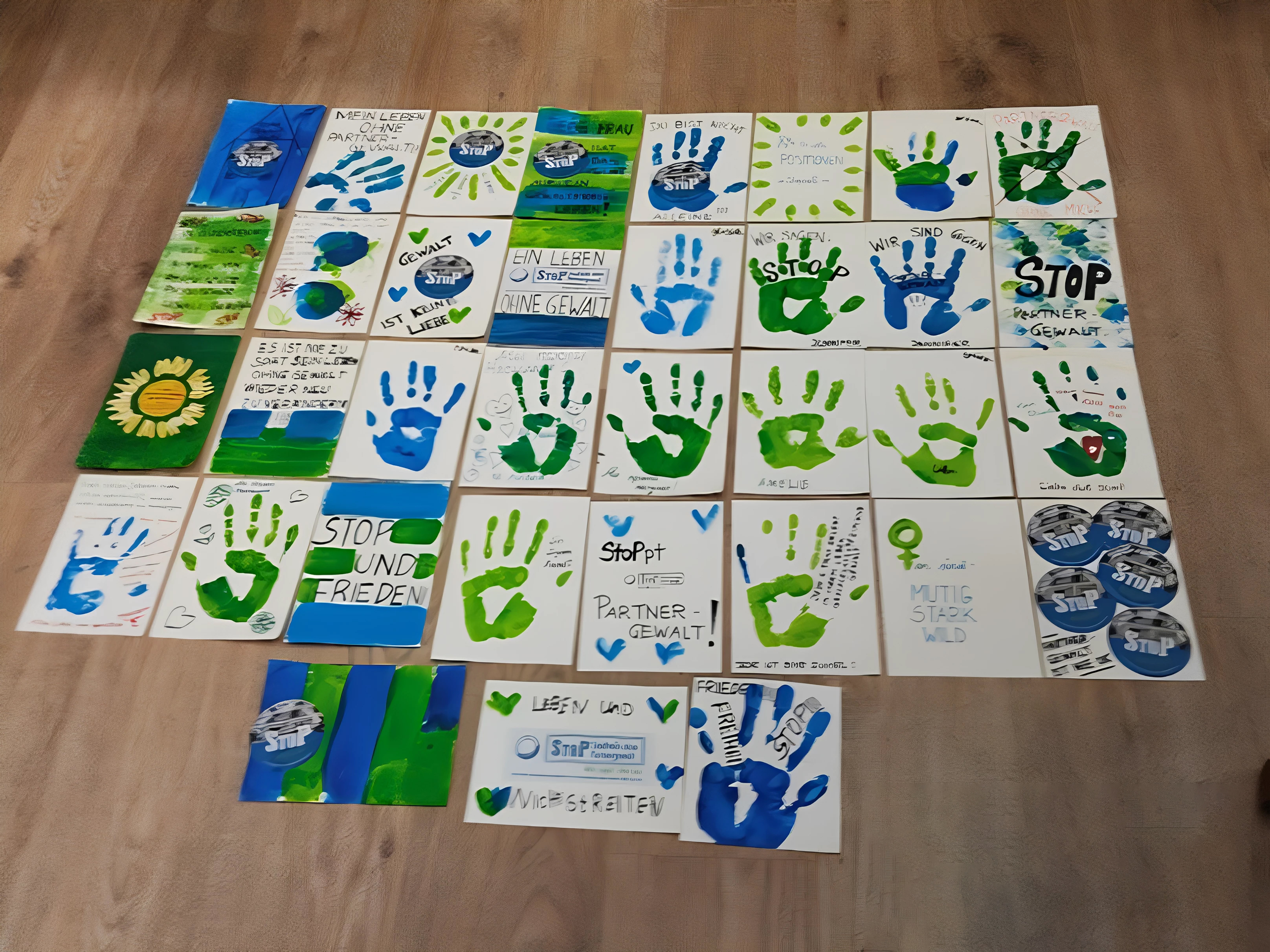
Links
-
UN Kampagne „Bell Bajao – Ring the Bell”
-
-
-
-
StoP 'Ring the bell' (subtitles available)


